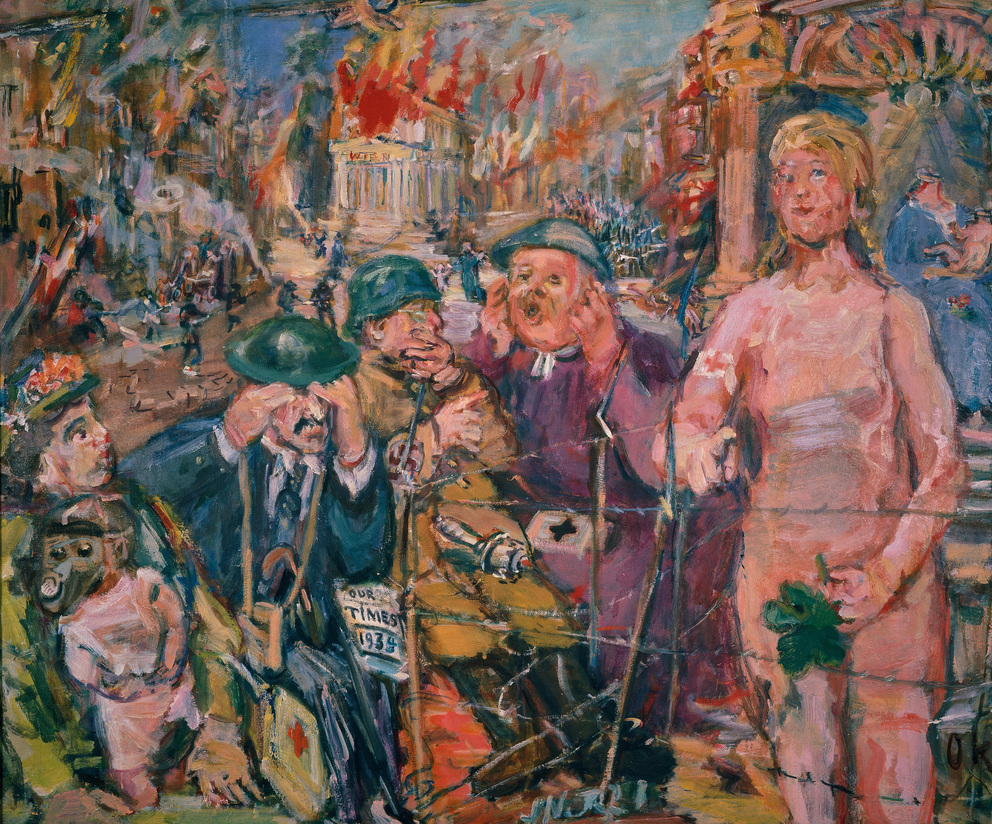
Leopold Museum,
Vienna © Fondation Oskar Kokoschka/Bildrecht,
Vienna 2022
Vienna © Fondation Oskar Kokoschka/Bildrecht,
Vienna 2022


Annexation – Alice in Wonderland
(Pöchlarn 1886–1980 Montreux)
If you have further information on this object, please contact us.
Oskar Kokoschka, London / Villeneuve am Genfer See (bis 1980);
Olga Kokoschka, Montreux (1980-1985); (1)
Wiener Städtische Versicherung AG (Vienna Insurance Group), Wien (ab 1985)
For provenance related information, please contact us.
2023/2024 Partial funding for digitization by the Federal Ministry for Arts, Culture, the Civil Service and Sport „Kulturerbe digital“ as part of NextGenerationEU.

